Check out this video that Island School communications assistant and IS alumnus Will Strathmann (F’07) created on lionfish for the Mitigating the Threats of Invasive Alien Species in the Insular Caribbean (MTIASIC) Project video competition. The 5 minute video aims to raise awareness throughout the Caribbean and Bahamas about lionfish and what can be done to help mitigate their impact. Please enjoy the video and eat more lionfish as we await results from the competition!
All posts by ceiblogger
Cape Eleuthera Institute Welcomes Eleuthera Principals
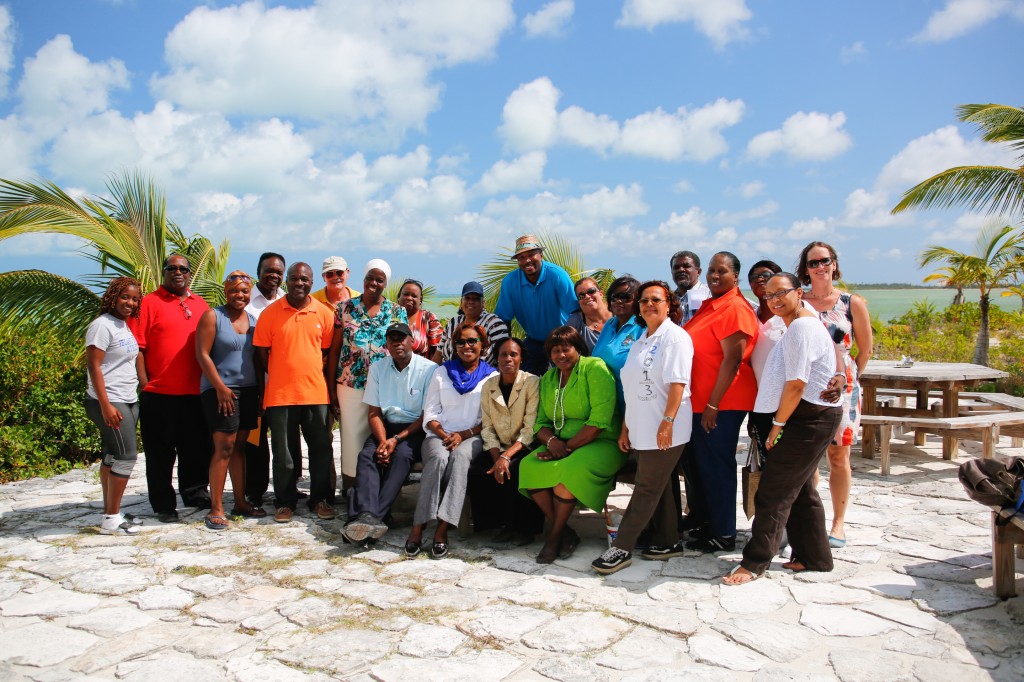
In December 2013, the Cape Eleuthera Institute (CEI) and Center for Sustainable Development (CSD) launched The Local Schools Program which has several education programs that reach young Bahamians. Our Local School Programs connect CEI and CSD to schools throughout Eleuthera and share information about current research projects. Through this program, young Bahamians get to understand principles of marine conservation and environmental stewardship participate in research themselves and get hands-on experience with topics covered in the national curriculum. Students gain a deeper appreciation for their natural resources and the need to protect them. Local School Programs support and supplement students’ experiences in school and engage a future generation of scientists, guides, and policy makers.
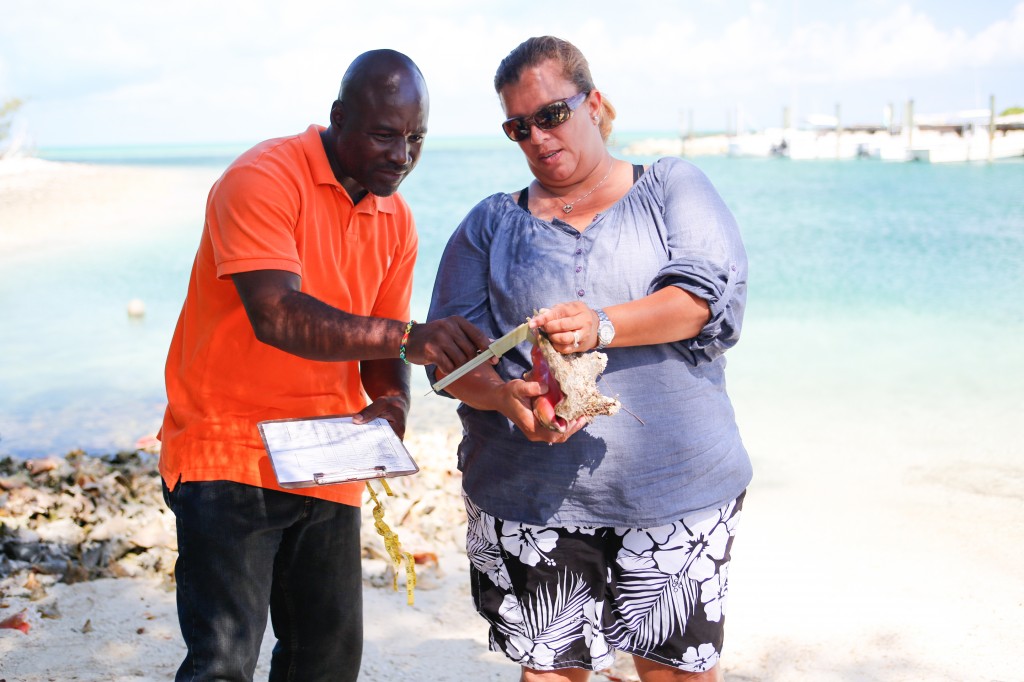
Principals from schools throughout Eleuthera and senior members of the District Education Office spent a day on campus to experience the program first-hand. The morning session was dedicated to understanding the program design and how the curriculum is built around the Bahamas National Science Curriculum which will be delivered to students as an experiential addition to lessons learned in the classroom. In the afternoon, Principals got down and dirty participating in research projects involving farming, aquaculture, aquaponics, conch and lionfish. A brief taste of some of the exciting projects researchers are involved in.
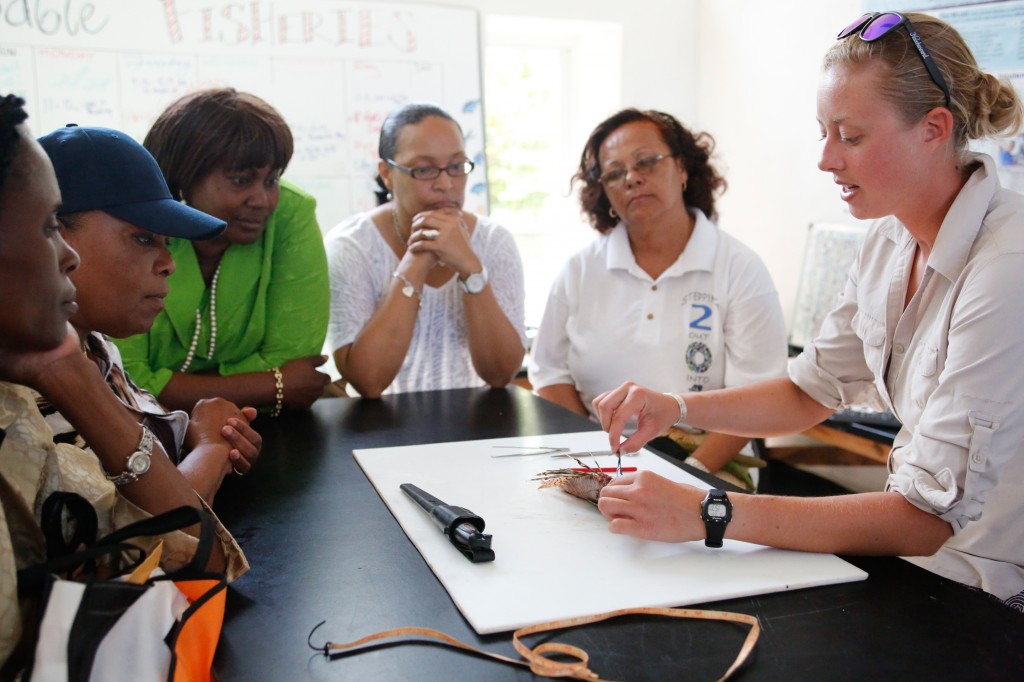
Courses are designed to reach students in Pre-K to Ph.D. and can be customized to various curricular objectives. Teachers and groups can learn more about these programs by contacting the Outreach or Educational Programs Department at CEI at 1-242-334-8552 (Danielle Gibson/Tiffany Gray/Karen Knight). Educational Programs are delivered year round on space available basis. In addition, see our website for information on Summer Camps, Summer Apprenticeships, and BESS Applications at www.ceibahamas.org
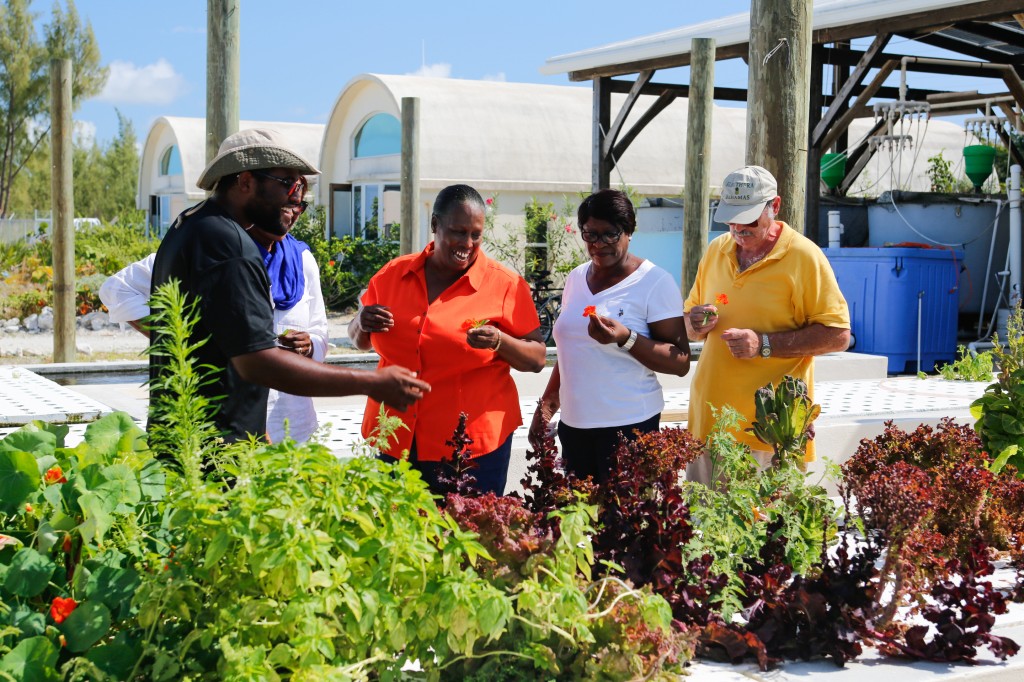
CEI Researchers present at the 2nd Bahamas National Natural History Conference in Nassau
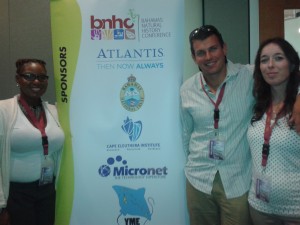
CEI researchers were busy in Nassau over the past week. On March 4th, Aaron Shultz and Kate Kincaid attended an IUCN Red List Workshop, held at The Bahamas National Trust. The International Union for Conservation of Nature (IUCN) is the world’s oldest and largest global environmental organization (www.iucn.org). As an expert commission member for several IUCN groups, Kate is regularly involved in IUCN work. This workshop was open to scientists to come together and discuss plans for a National Red List for The Bahamas. The IUCN Red List of Threatened Species (www.iucnredlist.org) promotes conservation and is an assessment of the conservation status of species to highlight taxa that are threatened with extinction. Species are evaluated using set criteria; this catalogue of threatened species is an internationally recognized inventory and important for conservation, decision making and highlighting biodiversity loss.
Many species have not yet been assessed and many countries are conducting national Red Lists. A national Red List for The Bahamas can be used for conservation planning and to assess their progress towards the 2020 Conventional on Biological Diversity Aichi targets. At this workshop, Kate and Aaron expressed CEI’s interest to be involved in the planning process and in species focus groups for sharks, corals and turtles.
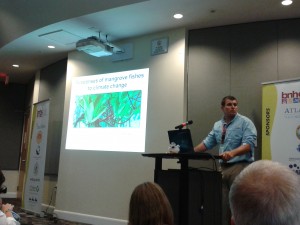
Following this workshop, CEI researchers Aaron Shultz, Kate Kincaid and Kristal Ambrose attended the 2nd Bahamas National Natural History Conference. This was a 3 day conference from 5th-8th March led by the Bahamas National Trust (www.bnt.bs) that highlighted the importance of research, conservation, and environmental stewardship in The Bahamas. The conference began with an opening ceremony at Atlantis followed by 3 days of talks. Continue reading
First Earthwatch team assists in Sea turtle research at CEI
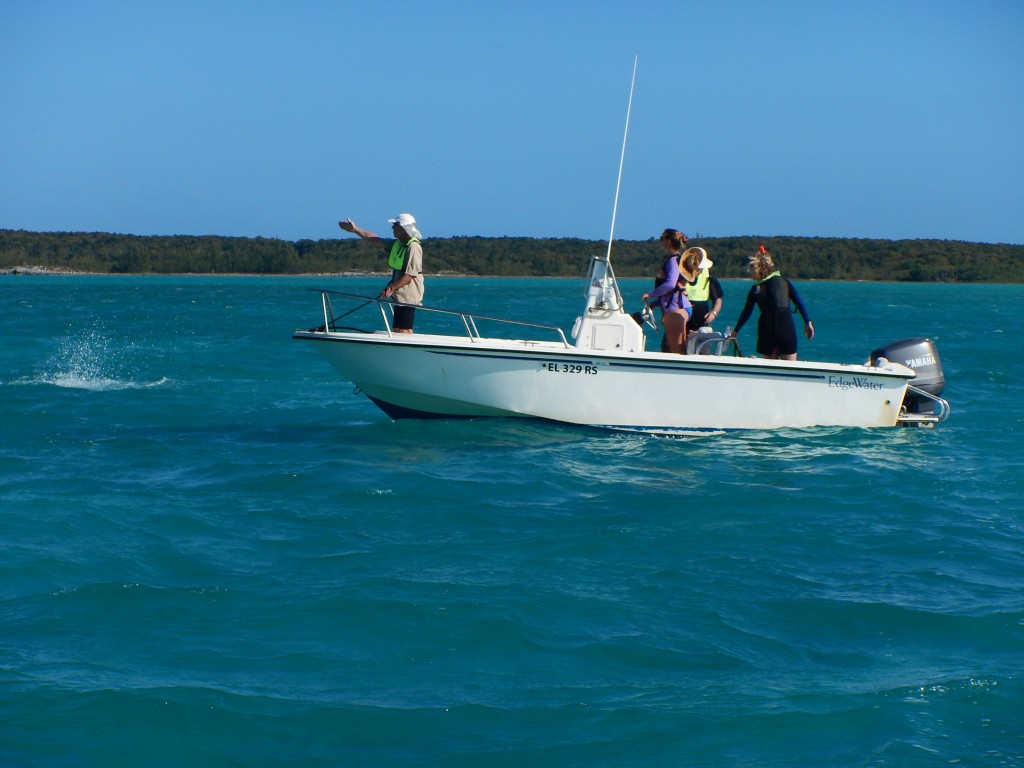
The first of 8 teams for 2014 were at CEI last week assisting with sea turtle research. 9 volunteers, from across America and Canada, spent 9 days collecting data from boats, on foot and by snorkeling in 11 sites across South Eleuthera. They collected vast amounts of data that would otherwise have taken much longer without their support. Using baited remote underwater video surveys for predators, they surveyed 9 sites and ‘captured’ 7 individuals from 3 different species: nurse, lemon and tiger sharks! They also caught and tagged 9 turtles, setting the record for catching 6 using the rodeo method in one day!
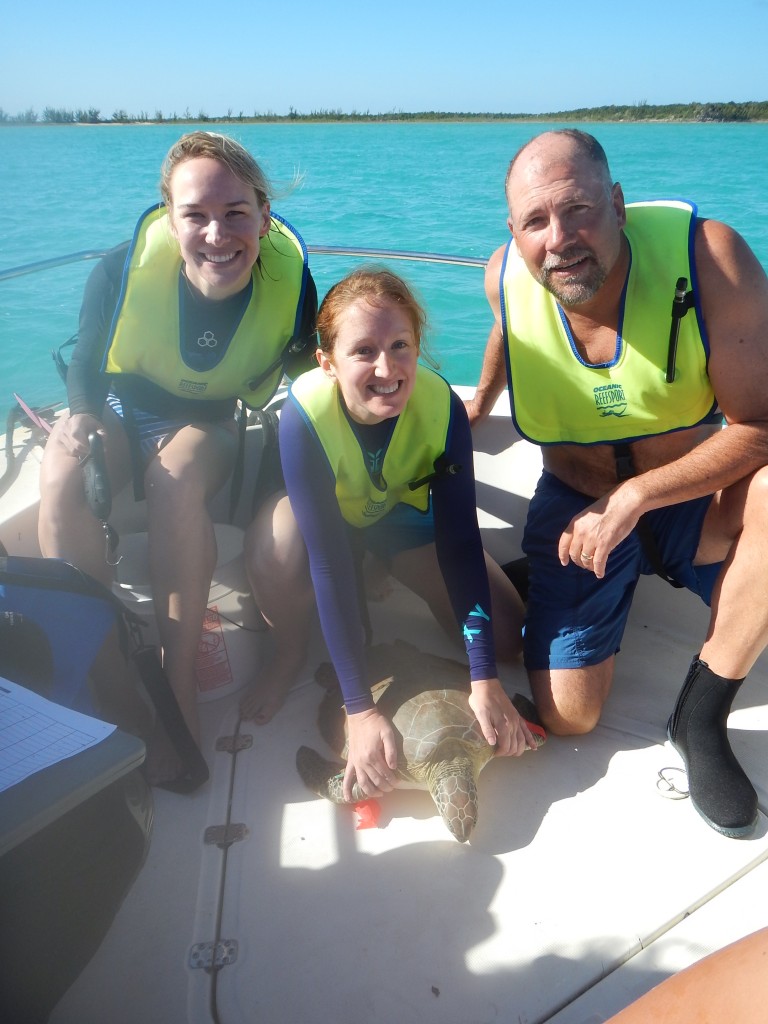
Weilenmann Students Discover the Wonderful World of CEI
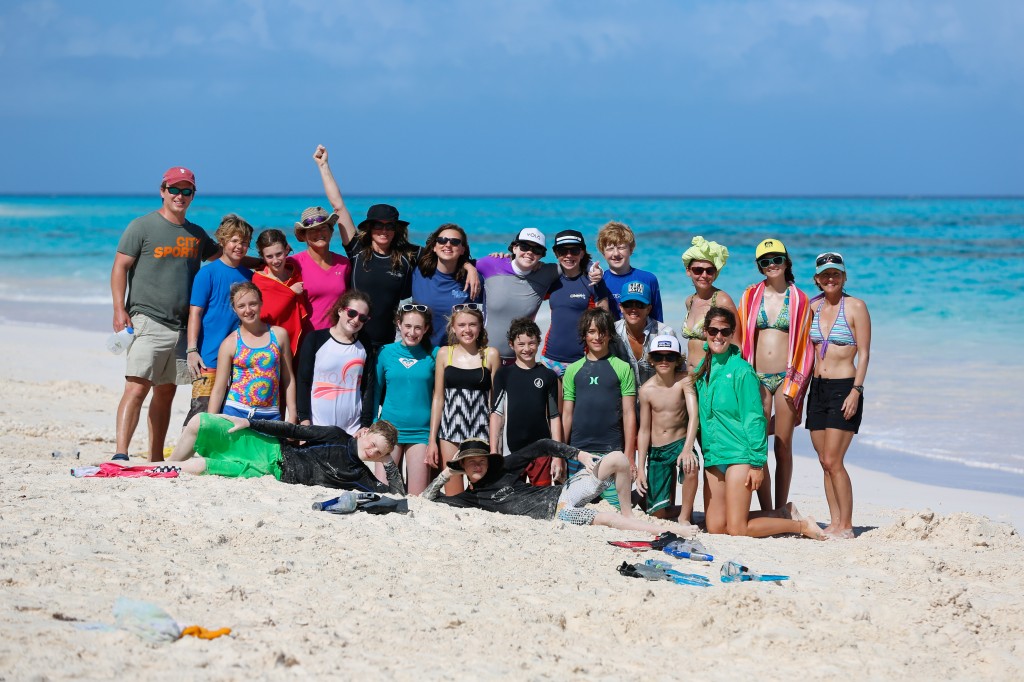
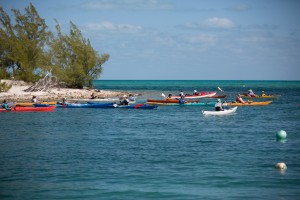
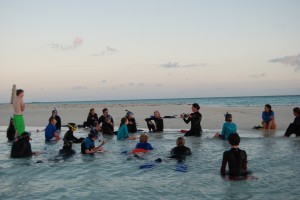
Winter break at the Weilenmann School of Discovery in Park City, Utah, is usually synonymous with snow pants, ski lifts, and hot cocoa. However, for 16 students and 5 chaperones, this February gave them the chance to dust off their passports, unpack some bathing suits, and head down to the sunny land of CEI for the school’s inaugural visit!
Students ranging from grades 6 – 9 joined the campus family for a week as they explored the marine habitats around the Cape. Between dissecting lionfish, learning about island permaculture, and investigating calcareous algae, the group found time for endless adventures, tons of snorkeling, and so much fun! Some of the highlights of the week included snorkeling with 6 eagle rays at Green Castle Blue Hole, seeing a nurse shark on our nightsnorkel, and dropping conch shells into the blue abyss of Exuma Sound.
The group was also fortunate enough to spend a night in the presence of Dr. Jonathon Ruppert, a visiting scientist presenting on the anthropomorphic impact of humans upon apex predators. The students loved spending time with a marine biologist!
With boundless energy, fantastic questions, and smiles that never stopped coming, Weilenmann was a great presence to have at CEI. We hope to share many more trips with these wonderful kids!
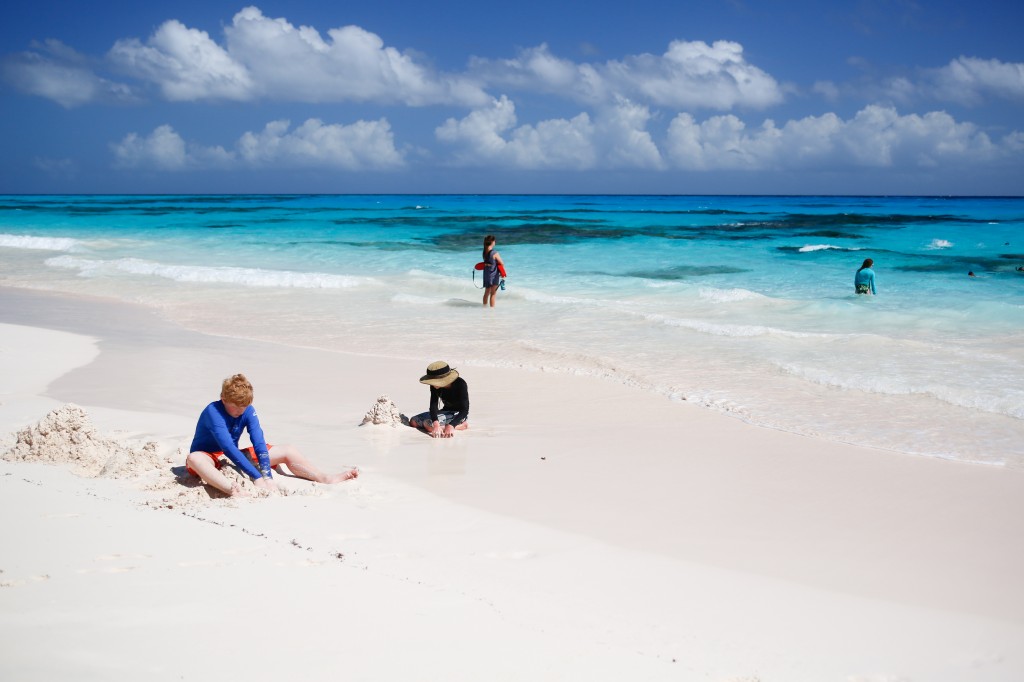
Lionfish Outreach at Central Eleuthera High School
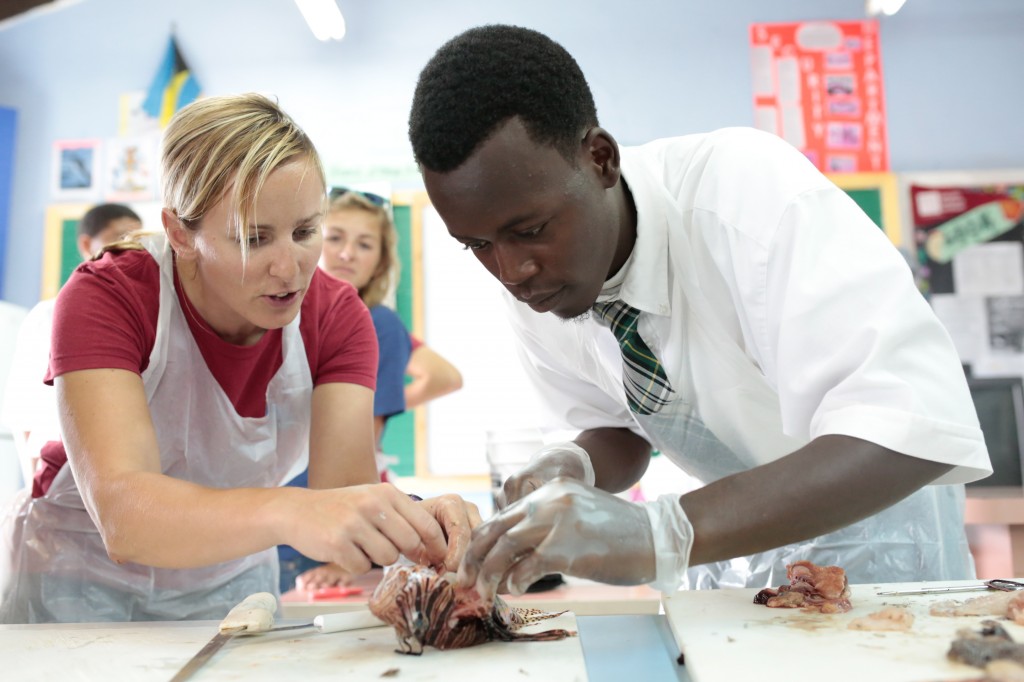
Fire up the grill! As the 22nd annual Bahamian Young Chef Championship rolls nearer, high school students around the island are fine-tuning their culinary skills and perfecting recipes featuring local ingredients and flavor combinations.
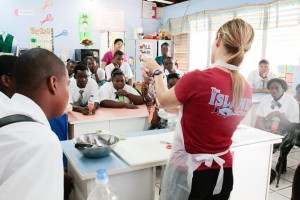
This week the CEI lionfish team headed to Central Eleuthera High School’s Family and Consumer Science class to speak with Mrs. Williams-Sands’ and Mrs. McKinney’s students about preparation of lionfish. A student representative from CEHS will be headed to the Young Chef’s district-based competition next week and is considering featuring lionfish as a local ingredient. This shows marked and exciting progress toward cultivating demand for the invader from the fisheries industry.
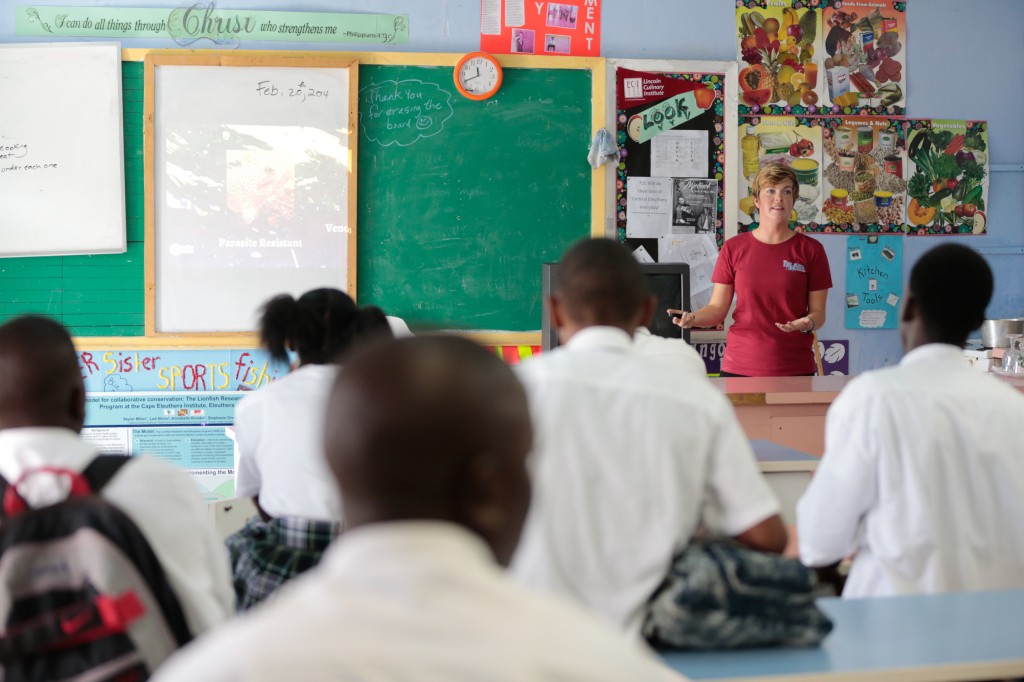
CEHS students learned about the invasion of lionfish in the Bahamas and some of the work done at CEI both to manage and to understand its implications for affected ecosystems. After being shown where lionfish spines were located and having their proper removal demonstrated, students Nigel and Sam faced off to fillet two lionfish, and they and their fellow students worked together to prepare them. Lionfish were fried, baked, and sampled by all students, many of whom had never tried the fish before!
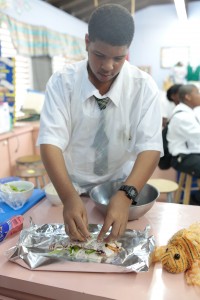
Not only was it exciting to share this delicious white-meat fish with so many new samplers, but being enthusiastically approached by CEHS to introduce this dish was equally thrilling. With the help of more students, teachers, and community members there may yet be a booming lionfish market. Stay tuned for updates regarding the lionfish team’s plans for a local fisherman campaign; best of luck to CEHS in their competition next week!
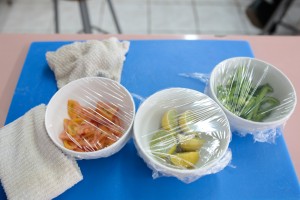
CEI Participates in Deep Creek Middle School’s “School Without Walls”

CEI Researchers Annabelle Brooks and Meagan Gary took a class of Grade 7 students from Deep Creek Middle School to get hands-on learning experience, capturing and tagging sea turtles in Half Sound, Eleuthera. The class was part of the middle school’s “School Without Walls” program which aims to tackle unique and pertinent issues confronting the surrounding community. Students waded out into the mangroves and captured 5 turtles and multiple bonefish. All were measured and tagged and released back into the wild. For many of the students, this was their first time exploring the mangroves ecosystems of Eleuthera. Two of the turtles were captured for the first time, which the kids named “Franklin” and “Slash”.




Stingray Physiology Project Update

Thursday, February 13th, researchers from the Shark Research and Conservation Program completed the second round of sampling for the program’s stingray physiology project. The project aims to understand how the immune response of yellow stingrays (Urobatis jamaicensis) changes as a result of long-term exposure to a chronic stressor. After Thursday’s sampling, stingrays will be exposed to increased levels of dissolved carbon dioxide for two weeks at levels forecasted from climate change models. This project has implications for better understanding the long-term responses of sharks to a chronic stressor since stingrays are closely related to sharks, and it is more practical to keep stingrays in a lab for long durations.

A typical sampling event involves drawing blood from all 20 stingrays. Blood is drawn from the caudal vein running along the bottom of the tail. The vein is encased in a cartilage sheath and is so small that needles used are 0.016 inches, or 0.4 millimeters, wide. Blood is prepared in a neutral buffered formalin solution and smeared on slides in preparation for tests to determine the total white blood cell count and proportions in which different white blood cells occur together. Sampling will occur three more times until the end of the month, at which point all current animals will be released, and 20 more will be caught for a second replicate.

The research team is particularly excited because this is only the third study to observe changes in immune function in sharks and rays, and this is the first study to observe changes in the immune response over a long duration. This project is a collaborative effort between researchers at the New England Aquarium, Carleton University, the Baltimore Aquarium, and the University of Illinois.
RSMAS help with the lionfish invasion
This week, the RSMAS group had a class on invasive species. As part of the class, team RSMAS got to go out with the lionfish researchers and help with spearing, dissecting, and filleting of fish.
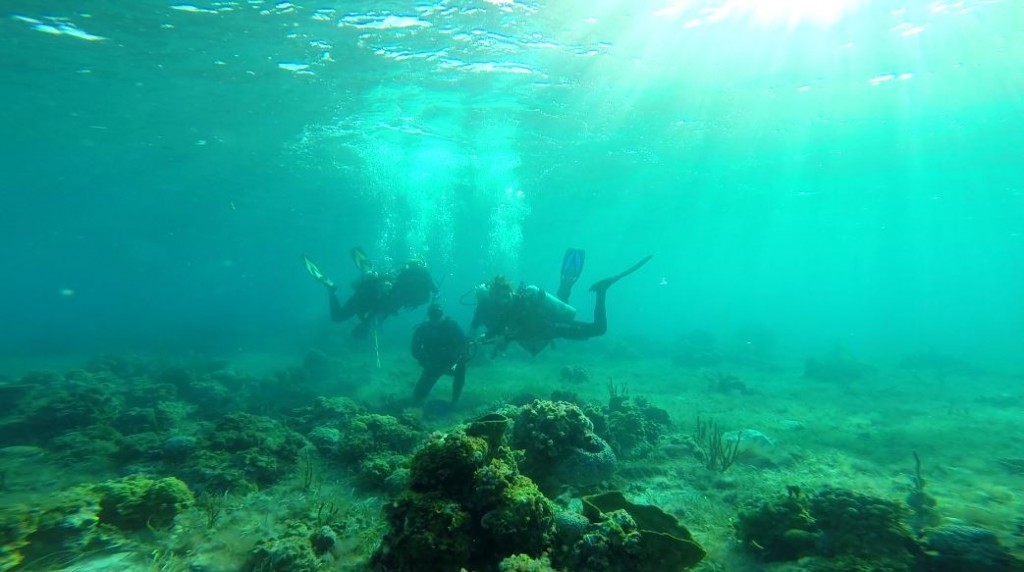
Megan Gleason said, “The spears were easy to use, and the lionfish were abundant. We got 14 of them!” Team RSMAS had the opportunity to dive and spear in an uncharted spot which was great.
It was alarming to see the amount of lionfish on a reef that had not been monitored, but it was also a cool experience having so many potential targets to spear!
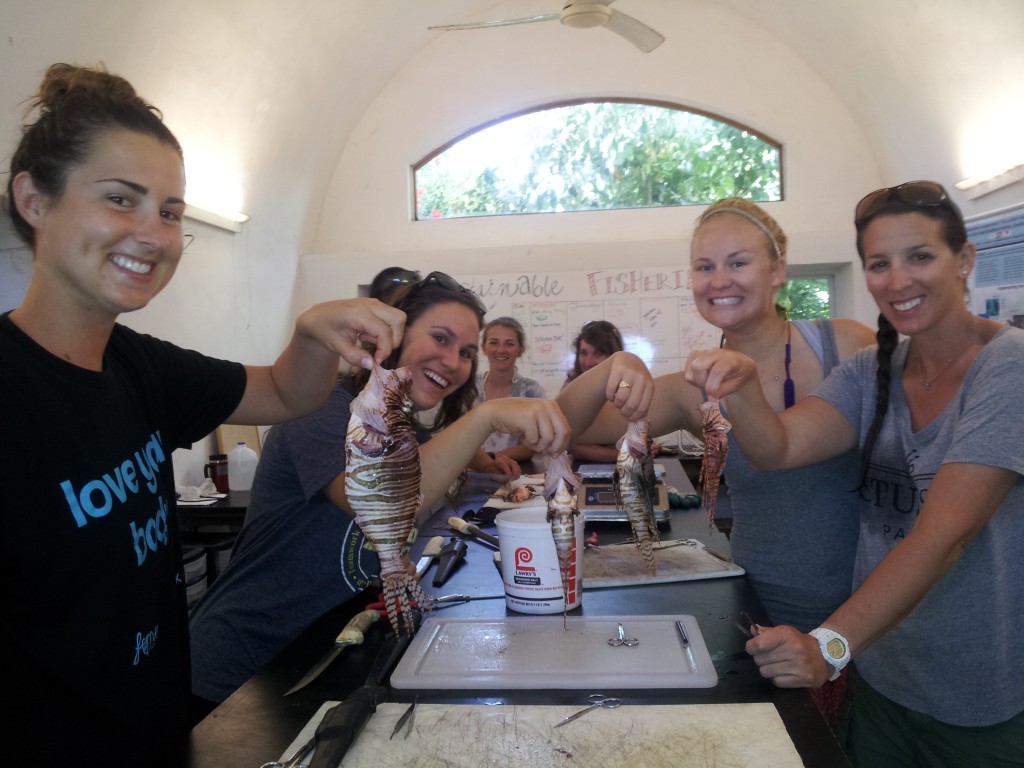
They got back to campus and began to dissect the fish in order to see what they had been eating. There were some baby crabs and shrimp in their stomachs; it was incredible that we were able to see them in their whole form. Then it was time to fillet the fish. Afterwards, the group reflected, “We are all looking forward to eating them and experimenting with ways they can be prepared. The cookbook we had the chance to look through gave us some good ideas.”
Research Technician Project Update
Meaghan Gary, Research Technician for the Turtle Research team, discusses her project:
We are currently conducting a study on the in-water thermal variation across a juvenile green turtle foraging ground and the thermal preferences of the juvenile green turtles utilizing this foraging ground. We have placed habitat temperature data loggers in sixteen different locations throughout our study site, Starved Creek, which is located on the west coast of Eleuthera. These temperature data loggers are called iButtons (Maxim Integrated Thermochron ® Temperature Data Loggers) and are programmed to record every hour so that we are able to account for tidal differences.
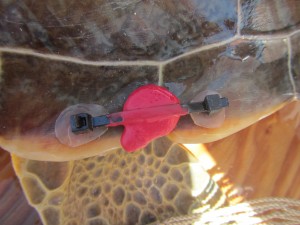
We are also in the process of attaching iButtons to juvenile green turtles in order to investigate their thermal preferences. The iButtons attached to green turtles will record a temperature every ten minutes due to their movement throughout the tidal creek. We hope to continue to attach more iButtons to green turtles throughout the spring and recapture as many as possible.